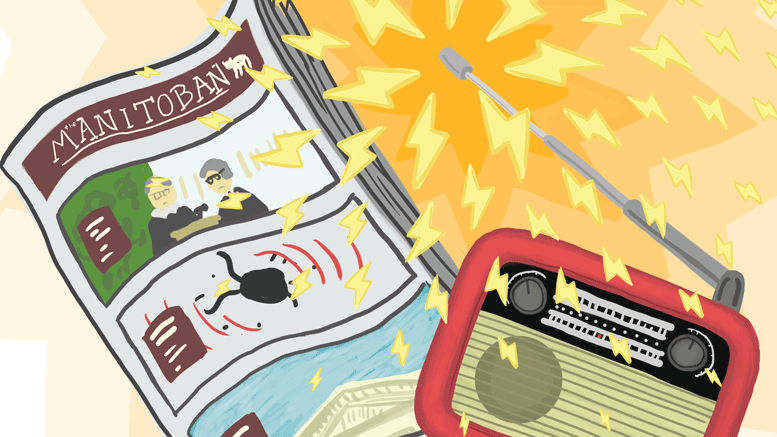As this paper hits newsstands, UMFM is in the midst of a referendum campaign to have their fees increased from $2.50 to $4 a semester.
The increase is long overdue; UMFM hasn’t had an increase in funding since 1998 and the station currently has the lowest per-student subsidy of any campus station in the province. With costs going up every year as a result of inflation, the squeeze on UMFM – to produce the same content with less money – has intensified over time.
Your “yes” vote means giving the station what it’s lost to inflation over the years and making sure they have the resources to provide new services to students – like a newly announced mobile app service to listen on the go, more public spots to listen on campus, and extended live streaming of campus events.
Being the two campus media outlets on campus, UMFM and the Manitoban share a lot of similarities. Both are produced for students and the campus community; both are student-funded (with UMFM raising additional funds through their annual Pledge-O-Rama); and both serve as a training ground where students can learn skill sets related to media – there aren’t many places where you can show up as a volunteer and learn how to use professional radio equipment or see how a newspaper is made.
It’s those common threads in both organizations that make them both so special to the U of M.
As a reader of the Manitoban, the value of campus media should already (hopefully) be apparent to you. Aside from the direct, tangible benefits to those who get involved – learning skills or enjoying the content produced – campus media elevates the level of discourse and overall quality of local media; it gives us options.
UMFM acts as an outcrop of quality in a landscape of corporate, carbon-copy, playlist-repeating noise. And when you’ve been inundated with noise for a while, quality sound stands out.
Student media also puts the power to direct the conversation into your hands. It’s as easy as showing up and getting involved.
My time with UMFM
My first time getting involved with UMFM was years before university. Before high school, too, in fact.
When I was little, I had the opportunity to come visit the station and try recording things for the air as part of a Mini-U summer camp. As a shy little kid, I was too embarrassed to tell anyone I was ever on the radio, or even listen to it myself.
But something from that experience seems to have stuck with me. Last year, as I started my master’s degree, I decided I wanted to try getting involved with campus radio. Even before I started (or returned to it, if you count my Mini-U experience) I was a big fan of the range of music they played and had a lot of respect for campus media in general.
When I fell into a position at the Manitoban I got the chance to contribute to Toban News Desk, the Manitoban’s weekly radio show. On our show, a small, rotating team of editors talks about different campus and student news stories that are featured in the paper that week.
University news, local arts shows and events, and Bisons sports: they’re all covered on a regular basis on the show. This year alone, we’ve hosted a number of guests to talk about student issues: UMSU president Jeremiah Kopp, CFS-MB chairperson Michael Barkman, UMSU students living with disabilities representative Andy Fenwick, and the U of M’s writer-in-residence for fall 2015 Kitty Fitzgerald.
Working at the Toban gave me a fast-track to get involved with UMFM, but what’s special about the station is that anyone can get involved. You can just reach out and get started learning how to edit audio, work a switchboard, host a show, or even just contribute to sorting CDs.
One last call for support
With all student union fees now tied to inflation, a fee increase for UMFM would put it, like the Manitoban, in a position where it would not have to ask for a fee increase ever again.
So think about what the radio station provides – what it provides to you, to the campus, to the city – and vote “yes” for UMFM. But don’t stop there. After you vote (or even before), be sure to stop by the station to see what your fees help support.
Then make sure you get the full value out of that extra $1.50. Get involved.


